Having an aquarium can be a source of pleasure, but it also comes with many aquarium problems.
In this article, we will examine the common fish tank problems faced by owners of aquariums like the appearance of ammonia spikes, green algae, pH imbalance, and much more. However, most people are not aware of their solutions.
As a result, we are not just going to discuss aquarium water problems and aquarium plant problems but their amazing and easy solutions too!
Let’s have a look!
Disclosure: This article contains affiliate links. When you follow a link to purchase the products, I sometime earn a commission, at no additional cost to you. Read my full disclosure here
The Most Common Fish Tank Problems Encountered
Problem#01: Ammonia Spikes
Ammonia spikes in aquariums occur when there is an excessive accumulation of toxic ammonia (NH3/NH4+). This build-up happens as organic materials like fish waste and uneaten food break down in the water without proper removal through regular maintenance.
High levels of ammonia can be detrimental to fish health, leading to tissue damage, reduced activity, increased fish problems, and even death.
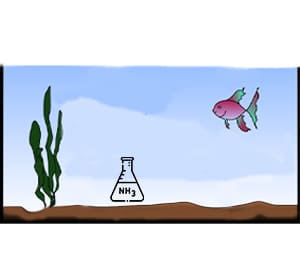
Solution
To tackle such aquarium problems as ammonia spikes, a good starting point is performing a water change to reduce the concentration of ammonia. If such aquarium water problems persist, it may be beneficial to consider enhancing filtration methods by using a higher-capacity filter or additional filtration media. These measures aim at improving the efficiency of removing ammonia from the aquarium water.
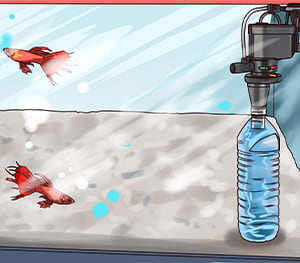
Problem#02: Overfeeding
The issue of overfeeding fish in the aquarium can lead to a range of common aquarium problems. These include an excess breeding of white worms and the build-up of nitrites and ammonia, which causes stress to the fish.
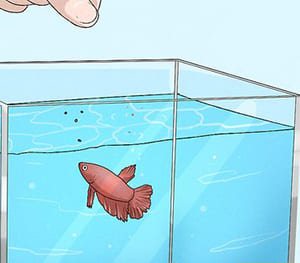
Solution
To prevent overfeeding, it is recommended that you only provide your fish with a sufficient amount of food for their survival. Any leftover food should be promptly removed using a net. Additionally, regular tank cleaning is essential for removing debris that cannot be easily removed with a net. This practice helps ensure good water quality within the aquarium environment.
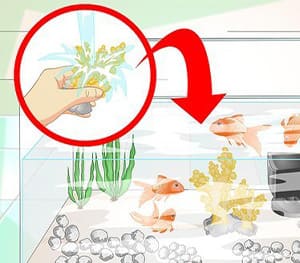
Problem#03: White or Tan Worms in Freshwater Aquarium
White or Tan Worms in Freshwater Aquarium The presence of pale-colored worms in your freshwater aquarium is another issue of aquarium problems which may indicate an increase in the population of planarians, often caused by excessive feeding or a buildup of organic matter.
Factors such as overcrowding of fish, malfunctioning filters, or inadequate filtration can contribute to this problem. While planarians are generally not harmful, their abundance suggests poor water quality.
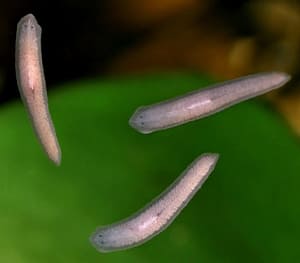
Solution
To address these aquarium water problems, it is important to avoid overfeeding and promptly remove any uneaten food using a siphon or fine mesh net. Regularly perform water changes and use a siphon to clean debris from the substrate.
Moreover, incorporating bacterial additives that support biological filtration and employing water conditioners that break down organic waste can be effective measures. As water quality improves and the availability of food for worms decreases, the population will naturally decline.
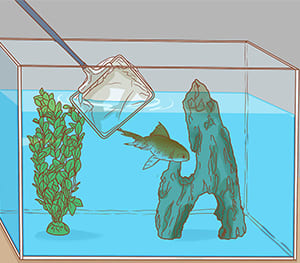
Problem#04: Excessive Debris or Suspended Particles in Water
The presence of a large amount of organic waste material in the water can result from overfeeding or insufficient mechanical filtration. This accumulation causes debris and suspended particles, which deteriorate water quality and encourage the growth of algae by releasing nitrogen compounds and phosphates.
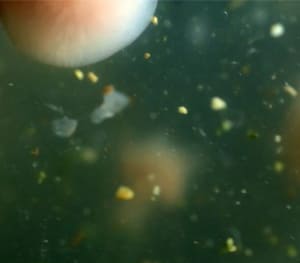
Solution
To maintain optimal performance and avoid fish problems, regularly clean or replace mechanical filter media. To enhance mechanical filtration, utilize water clarifiers (flocculants) to bind fine particles together for easier removal through filtration.
Additionally, consider occasionally incorporating extra-fine “water polishing” mechanical filter media such as micron filter pads.
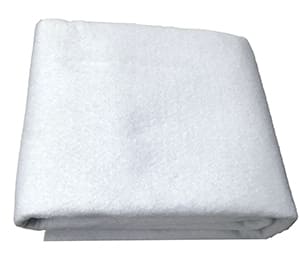
Problem#05: Hazy Water
Dealing with aquarium problems, you cannot miss out hazy water in an aquarium can arise due to a bacterial bloom caused by high levels of ammonia. Nitrifying bacteria, which consume ammonia, reproduce rapidly and become apparent as swirling clouds that appear white.
Common triggers include overstocking fish, excessive feeding, cleaning with chlorinated water, or using antibiotic medications. Inadequate biological filtration may also contribute to bacterial blooms.
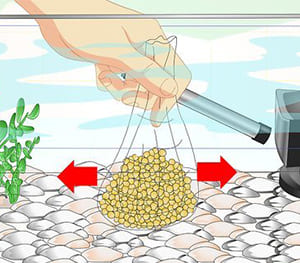
Solution
To clarify hazy water, employ an air pump with air stones to introduce additional oxygen into the aquarium. This helps remove toxic gases and enhances the efficient processing of ammonia by nitrifying bacteria.
Additionally, consider supplementing beneficial bacteria using additives especially after medication use or significant water changes are made to protect from aquarium water problems.
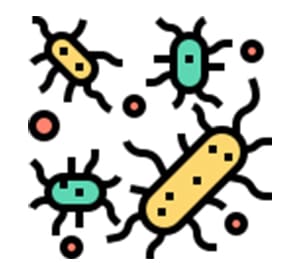
Problem#06: pH Imbalance
The pH Imbalance constitutes frequent aquarium problems, which can have considerable effects on the health of fish. The recommended pH range for most aquarium setups falls between 6.5 to 8. Any deviations from this optimum range have the potential to harm aquatic organisms.
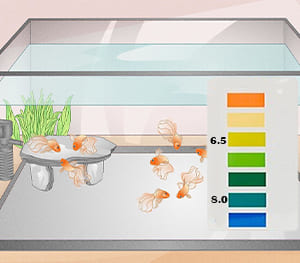
Solution
One option is adding a buffer substance into the aquarium or employing a reverse-osmosis filter system. Alternatively, if you need to reduce the pH level, consider incorporating peat or lowering the water temperature gradually as part of your approach.
It is essential to make these adjustments steadily over several weeks and regularly monitor and test the water parameters in your aquarium to sustain optimal levels of acidity/alkalinity (pH).
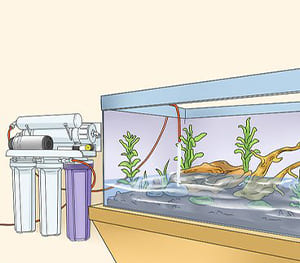
Problem#07: Discoloration of Water in the Aquarium
Talking about fish problems, the discoloration of water is something one observes quite frequently. The appearance of red or rust-colored water in an aquarium is often caused by mineral-rich source water, particularly well water with high iron content.
This discoloration can be intensified by high oxygen levels, which oxidize dissolved iron particles. Excessive minerals can also promote aggressive algae growth and make it difficult to adjust pH levels, especially in hard water conditions.
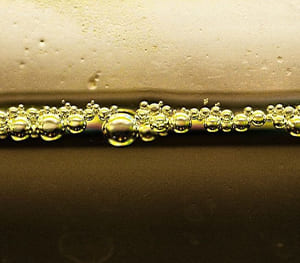
Solution
Consider using chemical filter media such as Poly Filter that specifically targets pollutants like iron and silicate. Incorporating peat or similar chemicals for softening water can help stabilize pH at desired levels. However, if the source water has a high mineral content (hard water), avoid using pH decreases as they may not effectively lower the acidity due to hard water’s buffering capacity, instead, use reverse osmosis to purify.
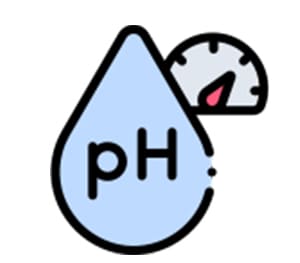
The Common Aquarium Plant Problems Encountered
Problem#01: Yellowing of Leaves in Aquarium Plants
Now, coming to aquarium plant problems, the first we are going to discuss is yellow leaves.
The presence of yellow leaves in your aquarium plants may indicate underlying common aquarium problems. These plants rely on light for photosynthesis, and a lack of adequate lighting can result in their leaves turning yellow.
Newbie aquarists often underestimate the light requirements of these plants, leading to insufficient light and consequently causing them to change color.
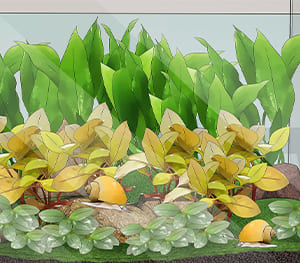
Solution:
To rectify this issue, it is crucial to ensure that your plants receive enough light. Upgrade your aquarium lighting system if necessary. Additionally, consider nutrient deficiencies as a potential factor affecting plant growth. Implement the use of substrate fertilizers or root fertilizer tabs, particularly if you have multiple plant species present within your tank setup.
One recommended choice is the Eco-Complete substrate due to its inclusion of vital minerals and beneficial bacteria that support optimal plant health.
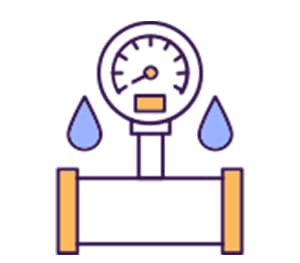
Problem#02: Crypt Rot-related holes in plant leaves.
You may have Crypt rot, which affects plants like Cryptocoryne if you notice small holes that worsen in the leaves of your plants. When tank conditions change quickly, this condition and aquarium plant problems frequently occur.
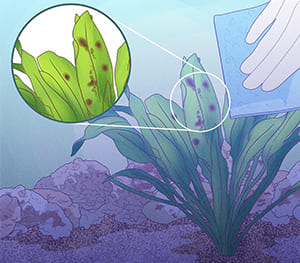
Solution
Maintain stable water conditions to address this by performing routine water changes and maintaining constant temperature, lighting, and water chemistry. Even if your plants appear to be withering away, once the tank has stabilized, they can recover if the roots are still strong. Maintain stable water conditions for your plants to recover.

Problem#03: Slow Growth Rate
One issue that contributes to common aquarium problems is related to aquarium plants which may experience inadequate growth due to factors such as insufficient lighting, nutrients, or CO2. On the other hand, excessive plant growth or the presence of fast-growing species can also result in rapid plant growth in an aquarium setting.
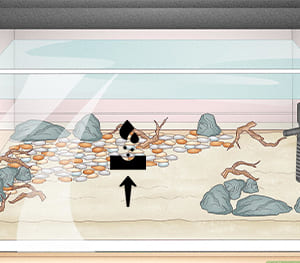
Solution
To optimize growth rate and solve aquarium plant problems, it is recommended to ensure appropriate lighting conditions, utilize substrate fertilizers, and monitor CO2 levels. For controlled rapid growth, regular pruning of plants can be implemented along with the introduction of herbivorous fish species or a reduction in feeding frequency.
Additionally, adjusting the intensity of lighting as necessary will also play a crucial role in managing plant growth effectively.

Problem#04: Black Algae
The last issue out of all common aquarium problems is the presence of black algae in plant leaves, which can be attributed to an excessive amount of phosphates resulting from insufficient maintenance and inadequate lighting.
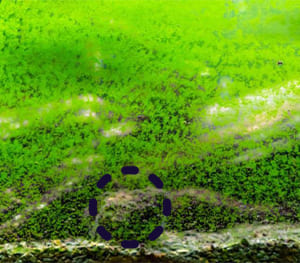
Solution
Excessive algae growth can be avoided by implementing regular water changes and maintenance procedures. This includes replacing filter media monthly and conducting weekly tank water replacements of 15%-20% to effectively regulate phosphate levels, thus controlling black algae growth and other aquarium plant problems.
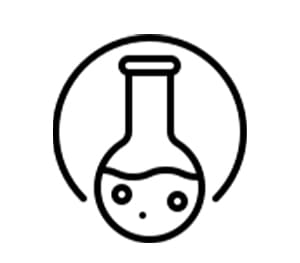
Conclusion
In summary, maintaining the well-being of your fish tank is crucial. Familiarizing yourself with common aquarium problems and their corresponding solutions is essential.
By being proactive and immediately addressing any problems that arise, you can ensure a healthy environment for your fish to flourish and develop happily.



